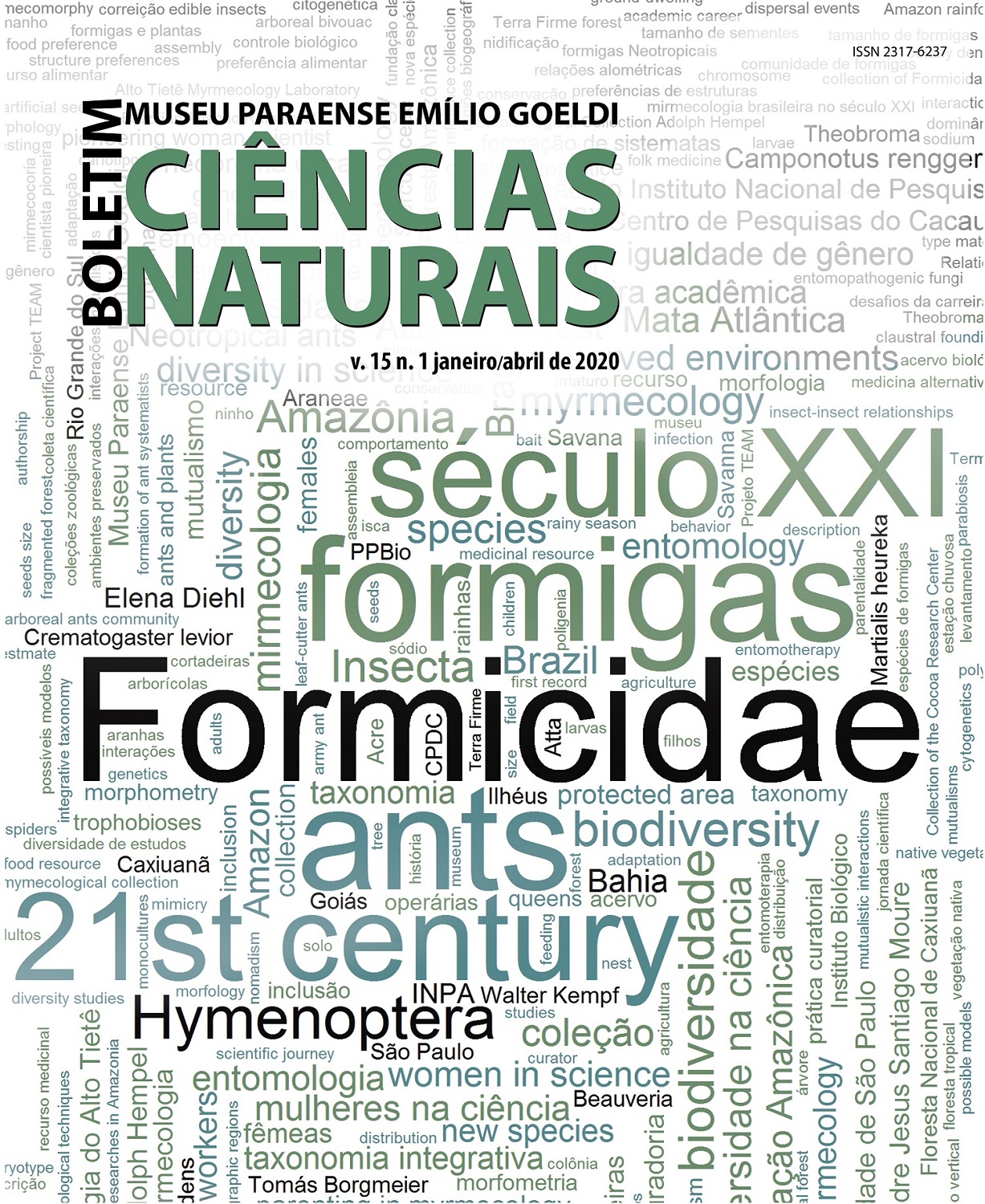Ants as a food and medicinal resource
DOI:
https://doi.org/10.46357/bcnaturais.v15i1.238Keywords:
Entomotherapy, Ethnoentomology, Edible insects, Folk medicine, MyrmecophagyAbstract
This text provides a review of the literature describing the importance of ants to humans in food supply and disease treatments, aspects that go beyond the support of environmental services that these animals perform. We have collected and updated information on the use of ants as food and as medicinal resource by indigenous and rural native communities in Brazil, in Latin America and in other continents. The compiled results of the present study demonstrate that myrmecophagy is still widespread, and it is an important nutritional source. In total, 52 species of ants were found to be used as food. Regarding medicinal purpose, 19 species of ants were accounted until now. In addition to the antifungal and antibacterial properties of hormones produced by the mandibular and metapleural glands, there are cuticular hydrocarbons and secretions of the venom gland, plus glands associated with the sting apparatus. They produce chemicals with applications in stomach, respiratory, and circulatory problems, and also in bleeding, arthritis and pain in general. Thus, we address two aspects of ants / humans interaction and highlight their historical use in Brazil.
Downloads
Published
Issue
Section
License
Publication means fully assigning and transferring all copyrights of the manuscript to the journal. The Liability Statement and
Assignment of Copyrights will be enclosed with the notice of acceptance. All the authors must sign the document and return it to the journal.








